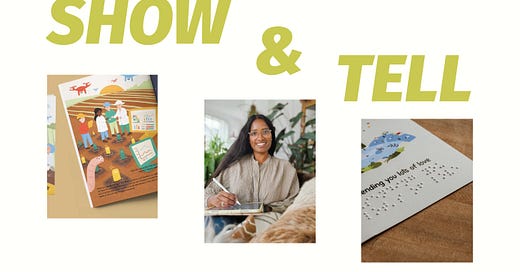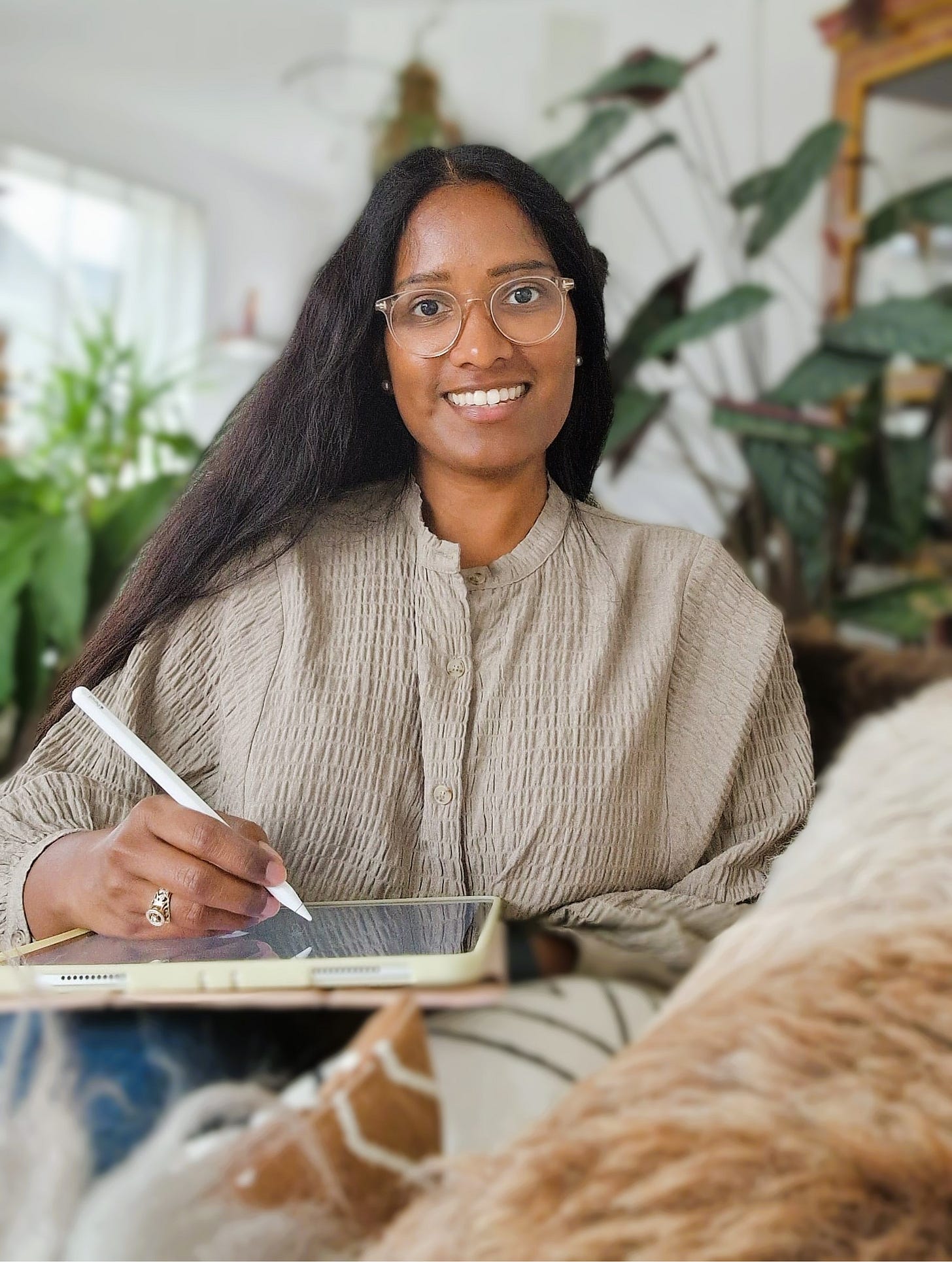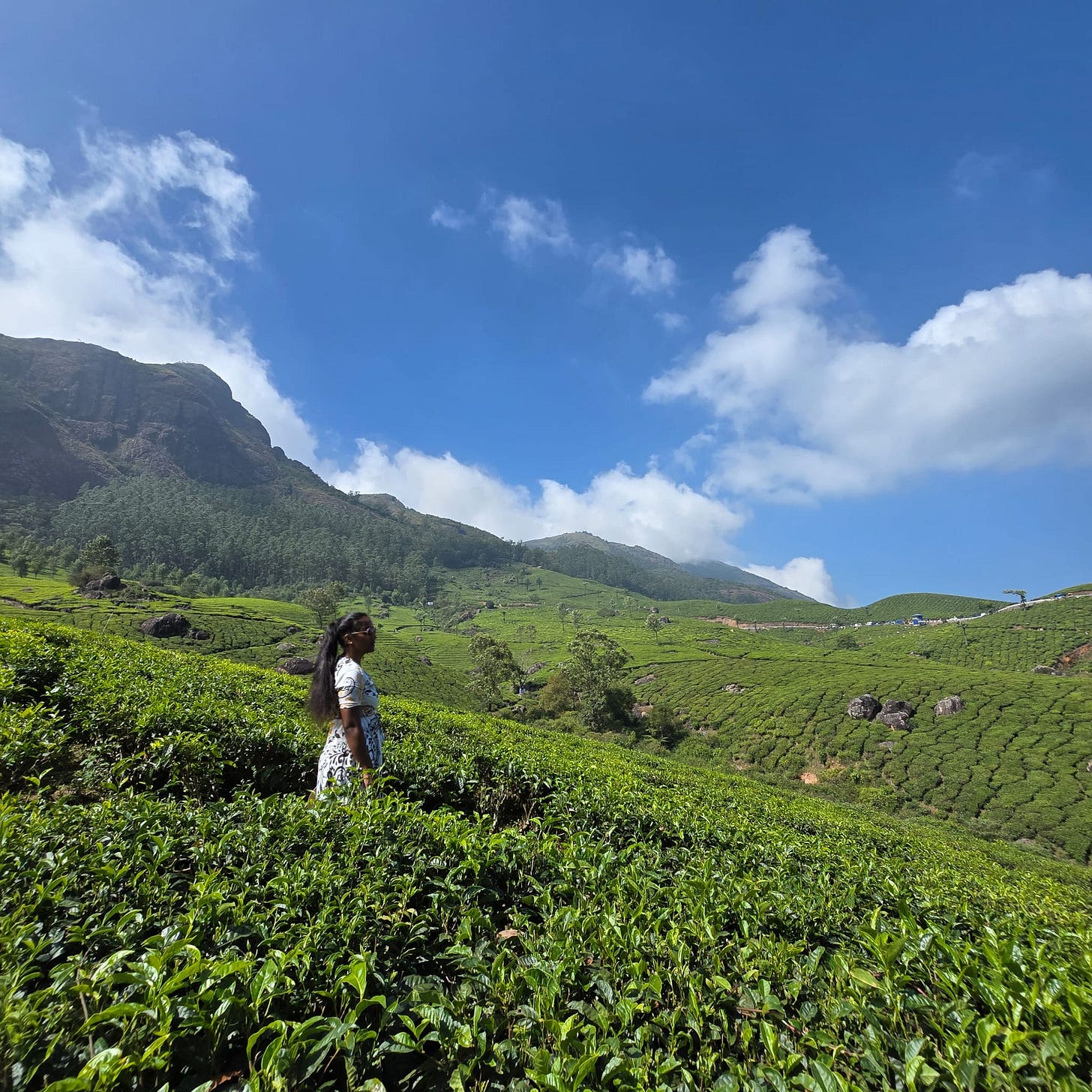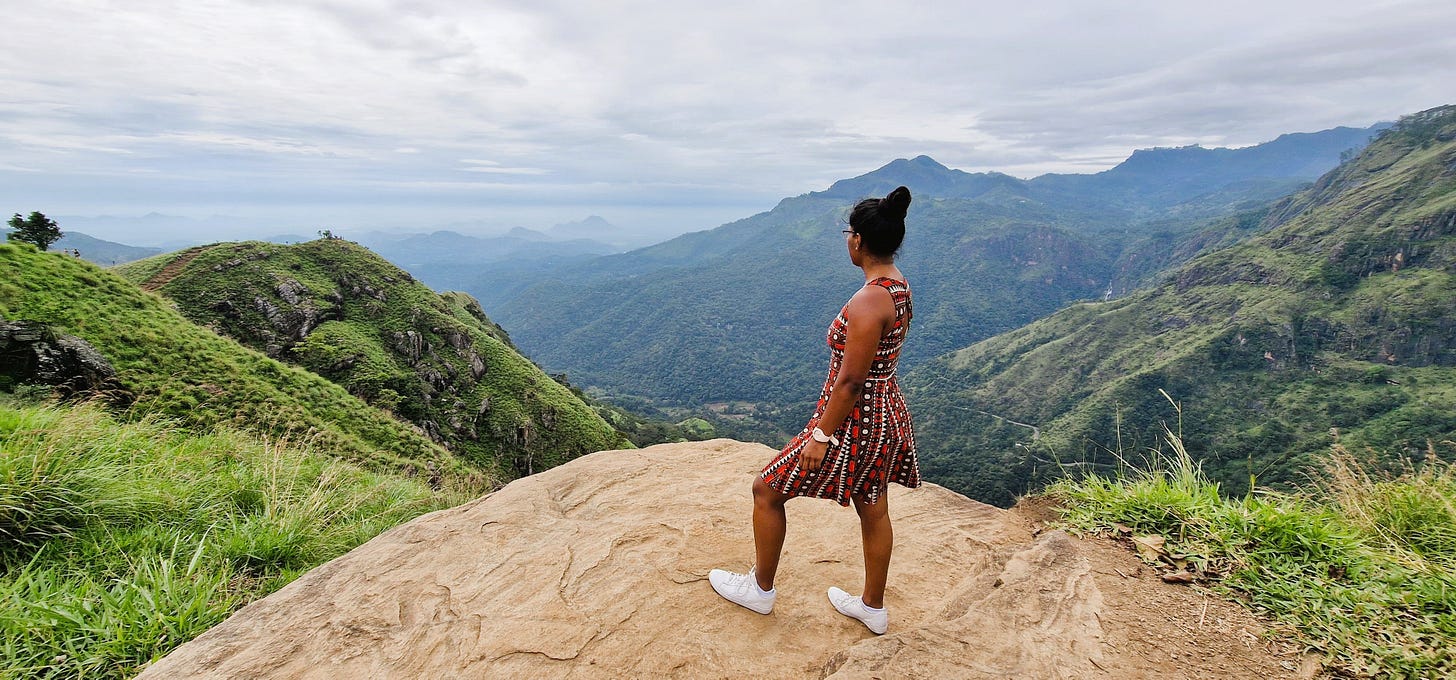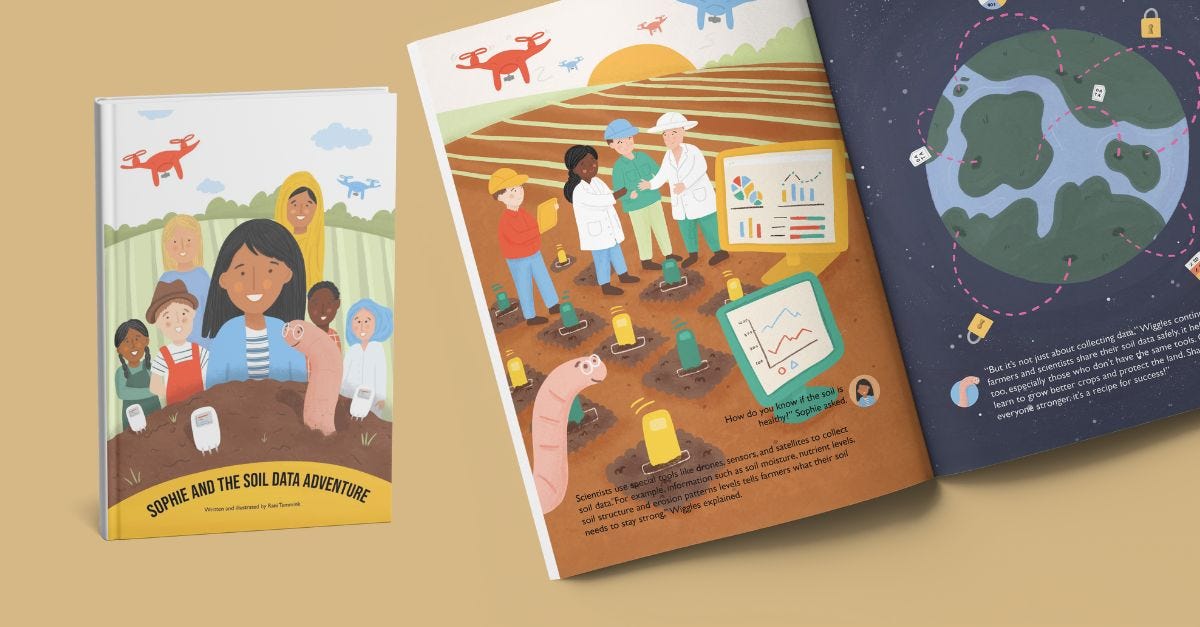Show & Tell #5: Rani (RAANII)
This week get to know Rani, from RAANII. An inclusive designer and illustrator.
As April draws to a close I am excited to share another Show & Tell interview with you all! For this week’s Show & Tell I was lucky enough to ask Rani, from RAANII, some questions about her, her creative career, and the importance of inclusive design.
Rani is a Dutch inclusive designer and illustrator, currently calling the Netherlands home. She grew up in Egypt, India, and Belgium, and therefore identifies more as a global citizen. Traveling is her greatest passion: “there’s nothing quite like the freedom of exploring new places and cultures!”
What do you enjoy doing outside of work?
When I’m not travelling, I love to recharge by trying out new activities in fun and different ways. One day, I might be training to run my first 10k or 16k, and the next, I’m planning an exciting solo trip to Lisbon. I’ve also dabbled in building a miniature tearoom (you know those DIY packages?), learning about polymer clay, and even caring for baby hedgehogs in our garden!
I enjoy watching documentaries on a variety of topics, diving into books from different genres, and visiting museums and musicals. Dining out is also a favorite pastime of mine! My list of hobbies are endless...anything that sparks my creativity and teaches me something new is right up my alley.
How did your illustration & graphic design journey begin? And how have you since developed your skillset?
My journey started back in 2007 when I first discovered Photoshop. I found myself really enjoying digital and graphic design, especially since I wasn’t the best at drawing on paper! While I loved it, I didn’t initially see it as a career path.
Fast forward 10 years, and it’s been a wonderful side passion throughout my professional work. I’ve enjoyed creating inspiring presentations, visuals to capture session results, and even taking notes in a fun sketch note style.
Currently, due to unforeseen circumstances I've decided to take the exciting leap to freelancing full-time! I’m always developing my skills as I explore various mediums. One day, I’m diving into watercolor tutorials, and the next, I’m creating infographics in Illustrator. I’ve discovered that the best way for me to continue to develop my skills is by watching tutorials and practicing as much as I can.
You travel quite a bit which must be great! Of all the places you have visited, has anywhere in particular been notably inspiring?
I’ve had the incredible opportunity to visit 49 countries! As I think about this question, I find myself reflecting on so many amazing experiences. I feel particularly drawn to Southeast Asia for its warm climate, delicious food, vibrant cultures, and stunning architecture.
Interestingly, I haven’t yet explored South America, which I’m eager to do! It might sound cliché, but I truly believe that every country has its own unique charm. From the fascinating tribes in Ethiopia and the rich history in Cambodia to the beautiful tea plantations in India and the mouth-watering food in Thailand, I’ve loved every place I’ve visited. What really makes each country special are the experiences you have there. Whether it’s going on a safari, soaring in a hot air balloon, volunteering at an international prison or orphanage, or eating at a local pub or cooking for local communities.
I've been fortunate enough to do incredible and crazy things and it’s the connections and experiences that make each journey unforgettable.
How do you feel that your studies and career experience in the international development sector has influenced your approach to being creative?
I’m excited to share that my business, RAANII, focuses on creating sustainable and inclusive visuals. These themes are deeply rooted in both my personal and professional life. Growing up in countries where the contrast and poverty were stark has shaped my impact-driven personality. I’ve always wanted to contribute positively to the world. As an adopted person, I often reflect on how things could have been different for me, which makes me feel privileged to give back. Having neurodivergence run in my family has further fuelled my passion for advocating for inclusion and diversity that I apply in creative ways.
I’ve also been fortunate to be surrounded by an international community throughout my life. People from all over the world, with diverse cultures and values, have enriched my perspective. I love bringing these seemingly distant worlds closer together through (visual) storytelling.
Professionally, I thrive on collaborating with colleagues and partners from around the globe. Their unique perspectives are incredibly valuable. However, I grew weary of long documents and texts that often go unread, so I saw an opportunity to strategically use visuals. Now, I harness creativity—especially visuals—as a tool to make complex ideas accessible and understandable, foster deeper connections with people and partners, and accelerate sustainability.
What is something in regards to inclusivity and sustainability that maybe people don't tend to consider (but they should) for creative work?
I believe it all starts with the mindset toward inclusion. And I’m not just talking about visuals; this applies to offline and physical spaces as well. Often, it feels like a checkbox for organizations, and they struggle to truly embrace it. Inclusion is much broader than just skin tones. I once had a colleague say, “We have you, so we are an inclusive team,” when I was the only brown person in the group. It doesn’t have to be complicated! Inclusion can be as simple as offering a service or product in multiple languages, providing subtitles for online webinars, or choosing the right fonts.
As creatives, we really need to go beyond just visual representation. To put it in a different perspective: if you’re inviting a friend over for dinner and plan to cook spaghetti, you’d probably check in with them to see if they like it or if they have any allergies, right? We should approach everything we create in the same way. It’s essential to ask the target audience what they need so we can align our services or products accordingly.
I feel like we’ve lost sight of effective communication, often focusing solely on financial growth. It needs to be more human-centred because that’s something we all share. In fact, there are so many missed opportunities and potential financial growth for businesses when they overlook the importance of inclusion.
Do you have any dream projects for the future?
There are so many exciting possibilities! I would love to collaborate with start-ups, NGOs, and schools on social and environmental topics to create illustrations and infographics for various purposes. There’s so much incredible work being done, but it often goes unnoticed.
Visuals are easily shareable and can connect people for new collaborations. I’m particularly interested in partnering with organizations—both big and small—that want to explore how to make their services, products, and businesses more inclusive, ensuring they don’t miss out on valuable opportunities.
I’m also eager to work with anyone organizing events, whether online or in physical spaces, to make experiences memorable and ensure accessibility. Additionally, this has been on my bucket list for a long time: I’m drawn to storytelling and would love to create a short documentary or a project that shares meaningful stories.
I am a big fan of your accessible braille greeting cards. Can you tell me about your favourite project?
I’m really proud of my greeting cards! It’s not just about the illustrations; it’s about showing that something as simple as a greeting card can be designed accessibly, allowing everyone to enjoy the joy of receiving one in the mail. This concept has resonated with many people.
I’m also proud of the short story I illustrated for FAO World Soil Day. It perfectly combines illustration, education, and my expertise in international development.
Do you have any creatives in particular that you are inspired by?
I absolutely love the work of artists Marta Bazan and Chiara Celini! Their illustration styles are fantastic, and the places and characters they create feel so relatable.
I’m also a big fan of Oliver Jeffers, Asa Gilland, and Becca Hall. I admire how all three of them illustrate and visually communicate social and environmental topics in storytelling forms that are both engaging and light-hearted. Their illustration styles are incredibly soothing.
Lastly, I want to highlight Zarissa Windzak for her ongoing advocacy for inclusive children’s and young adult literature.
Thank you so much to Rani for answering these questions. Her Instagram posts teach me a little bit more about inclusive design everyday and I am excited to see what she does next. You can check out more of her work on her Instagram (@raanii.eu), and on her website.
See you next Wednesday for another Show & Tell interview!


